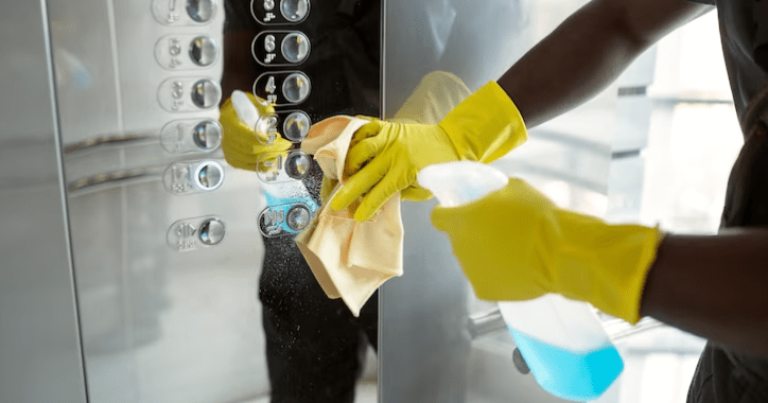27 June, 12:00

An elevator is an integral part of any building, and it requires proper maintenance to ensure the safety and comfort of its residents. One of the most important aspects of elevator maintenance is regular cleaning. However, cleaning an elevator properly can be a challenging task that requires the right techniques and tools to ensure efficiency and safety. In this post, we’ll discuss some key tips for properly cleaning elevators.
1. Start with a Thorough Inspection
Before starting any cleaning tasks, it’s important to thoroughly inspect the elevator. Check for any damage, wear and tear, loose parts, or malfunctioning components that may need repair or replacement. This will help you identify any potential safety hazards that need to be addressed before cleaning.
2. Choose the Right Cleaning Products
Using the right cleaning products is crucial for ensuring an effective cleaning process and protecting the elevator’s surfaces. Avoid abrasive or acidic cleaners, as they can damage the elevator’s finish or cause discoloration. Instead, opt for gentle, non-abrasive cleaners specifically designed for elevator maintenance.
3. Care for Stainless Steel Surfaces
Elevator panels and mirrors made of stainless steel add a sleek and polished look to the elevator. However, stainless steel surfaces require regular attention and care. The key to effective cleaning and maintenance is to use the right materials carefully.
Best practices for stainless steel care include:
Cleaning: Regularly dust and wipe down the surface with a mild soap solution and warm water. Grease or dirt stains can be removed with a specialized cleaning product. Use a soft cloth to avoid scratching the surface.
Polishing: For a glossy finish, use a clean, soft cloth, and wipe in vertical strokes rather than circular motions.
Scratch Removal: Scratches should only be addressed by professionals.
Local Protection: To prevent fingerprints, a light coating of silicone or furniture wax can be applied to the surface.
4. Pay Attention to High-Touch Areas
Certain parts of the elevator, such as door handles, buttons, and handrails, tend to accumulate more dirt, dust, and bacteria. These high-touch areas should be cleaned more frequently and thoroughly than other parts. Use disinfectant cleaners to eliminate bacteria and viruses that can spread diseases.
5. Use the Right Tools
Using the right cleaning tools can make the process easier and more efficient. For instance, microfiber cloths are perfect for wiping surfaces without leaving streaks or marks. Soft-bristled brushes are ideal for cleaning corners and gaps that are hard to reach with cloths. Additionally, vacuum cleaners with HEPA filters are excellent for removing dust and debris from elevator carpets.
6. Follow Safety Precautions
Cleaning elevators can be hazardous if not done correctly. Make sure to follow all safety procedures, such as wearing protective clothing and disconnecting the elevator’s electrical supply before cleaning. Avoid using ladders or unstable surfaces to reach higher areas, and be cautious around electrical components.
Properly cleaning elevators is essential for maintaining their safety, reliability, and aesthetic appeal. By following these tips, you can ensure that your elevators are properly maintained for the safety and comfort of building residents and users.
Articles First Elevators in Georgia: From Siemens Brothers to Present Day 14 April, 11:30 Modern electric elevators are a relatively recent invention, but they have a rich history that spans over a century. One such unique story is found in Georgia. In this blog post, we will share the fascinating…
Enjoy modern and secure elevator services designed for your comfort. Our team brings over 17 years of expertise to ensure your safety and satisfaction.
Safety is our priority
© 2025 Ltd. ,,L.S.''. All rights reserved